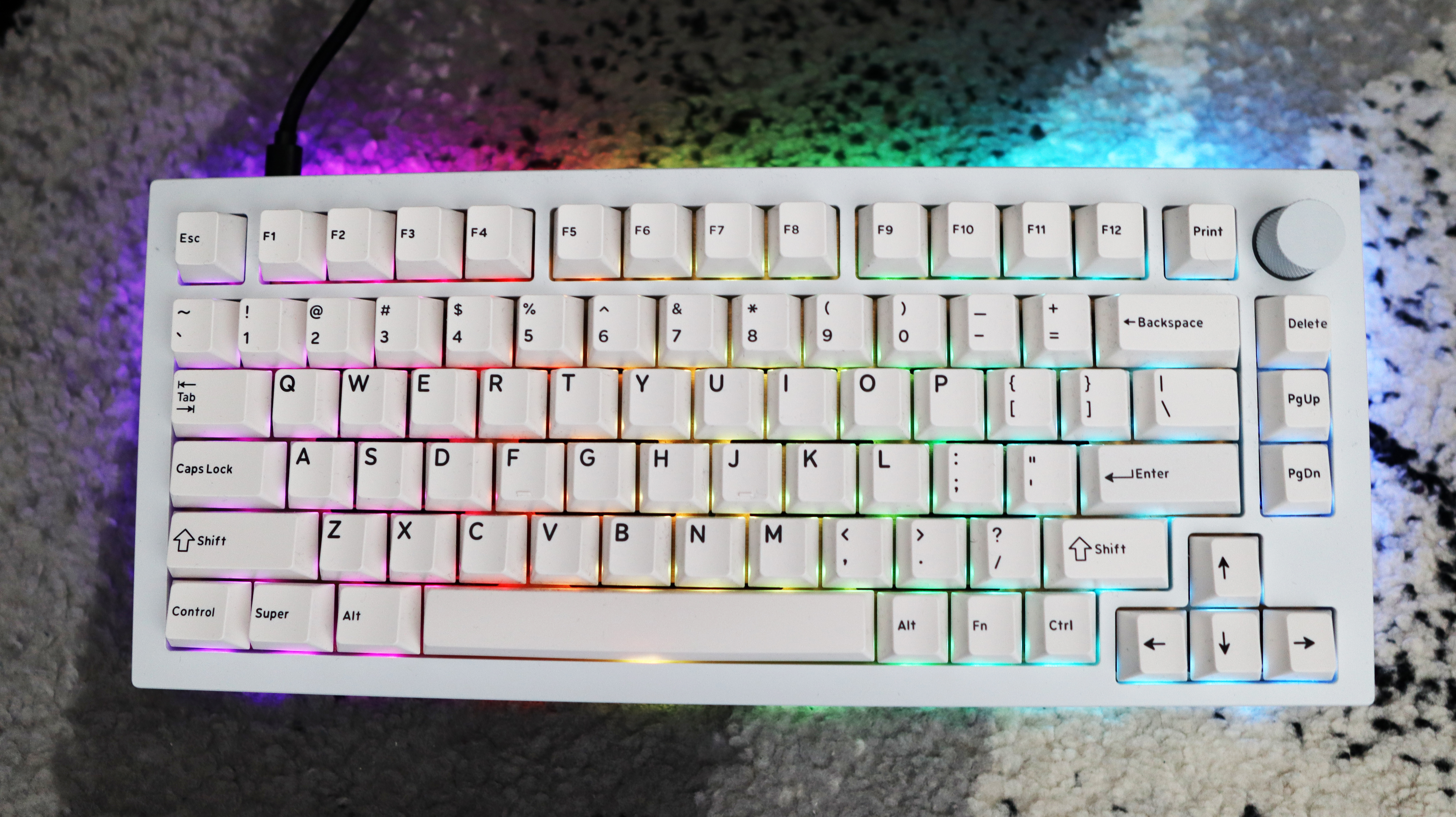
As more of an enthusiast in the keyboard space, it’s been interesting to watch the development of it into the mainstream as more people become hobbyists and fixated on everything from switch feeling to a board’s acoustics. To this end, everyone has a holy grail product, or in other words, a keyboard which, money no object, is their ultimate desktop companion. May I present to you a keyboard that is likely to be a lot of people’s holy grails: the all-new Drop Sense75.
This is a keyboard that’s been a long time coming for me personally, as it’s been a good few months since its announcement and I’ve been patiently waiting to test one. The version I’ve got to test is the $399 pre-built option in the fetching Polar colourway, although it is also available in more of a conventional black colour too, with white legends on the keycaps.
Looking at the feature set, it’s got all the makings of an excellent enthusiast-level keyboard—with a sturdy aluminium frame, Drop’s own much-lauded Holy Panda X switches, a hot-swappable PCB, and a sea of RGB lighting on the keyboard’s underside. But the reality is a little bit different.
Just to provide a little bit of context, the 75% custom keyboard space is one that’s becoming quite crowded, and there are already a handy few options offering a similar set of features for a lot less than the Sense75 is, such as my beloved Keychron Q1 V2 I’ve been using on a daily basis, or the new Asus ROG Azoth for those who want more of a gaming flavour.
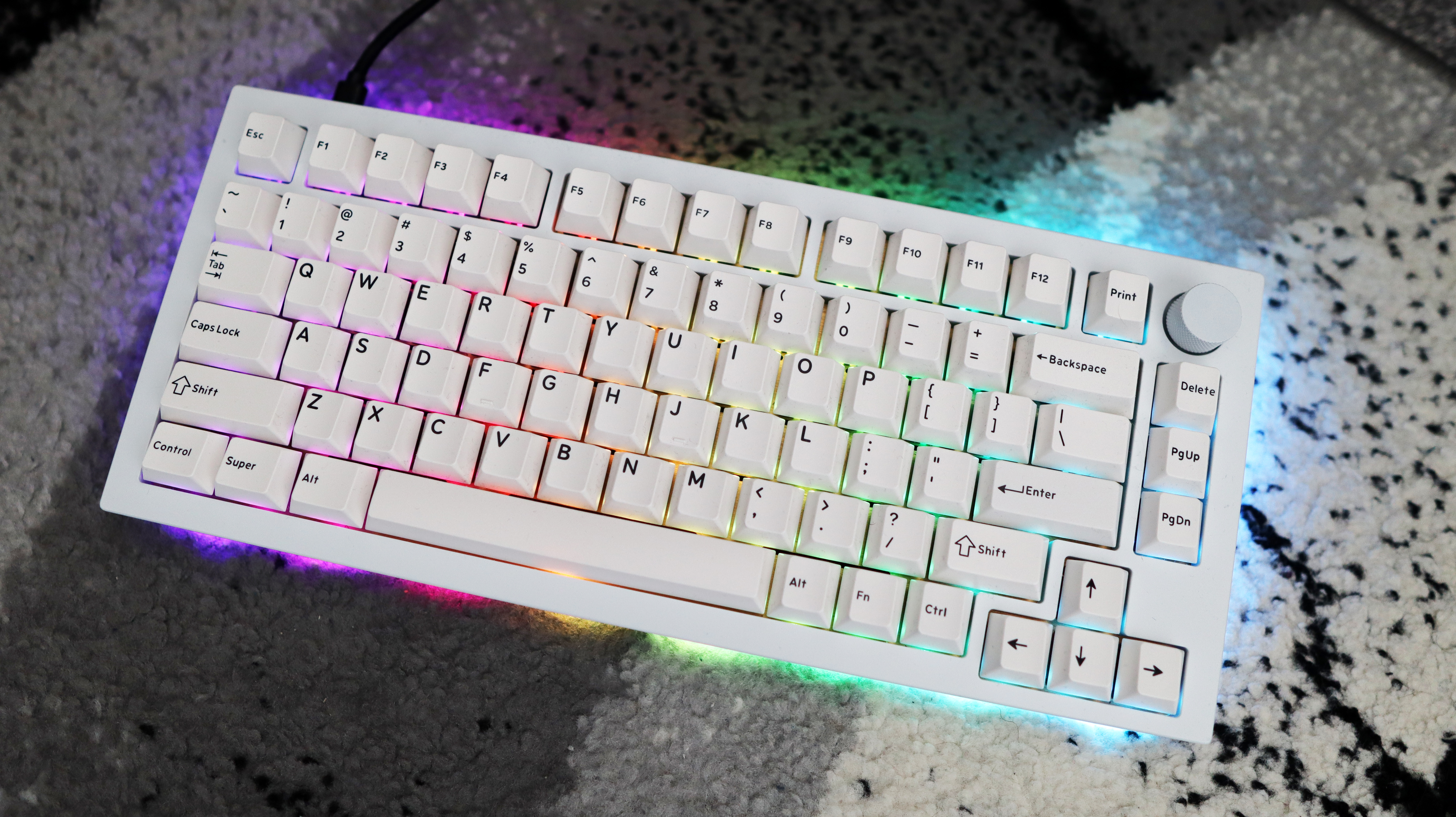
Size: 75%
Base: Hot-swappable
Switches: Drop Holy Panda X, 60g
Backlighting: Underglow RGB lighting
Keycaps: ABS, double-shot
Weight: 978g
Connection type: USB-C, wired
Price: $399 (on sale for $279 right now)
So, why would you buy the Sense75 then?
Well, first of all, it’s incredibly well made. Even by custom keyboard standards, the Sense75 is ridiculously heavy at nearly a kilo and makes for one of the sturdiest keyboards I’ve ever used. In a world where the keyboard mainstream is becoming as thin and light as possible, it’s nice to still have a keyboard you could conceivably use as a weapon.
As well as offering a sturdy frame, the Sense75 also features a set of doubleshot ABS keycaps, with Drop’s own DCX profile. The caps on my sample are bright white, complete with especially legible black legends. It contrasts the ice blue of the Sense75’s chassis nicely, although I can’t help but think the slightly rounded typeface used on the keycaps cheapens the overall feel of the Sense75 a smidgen.
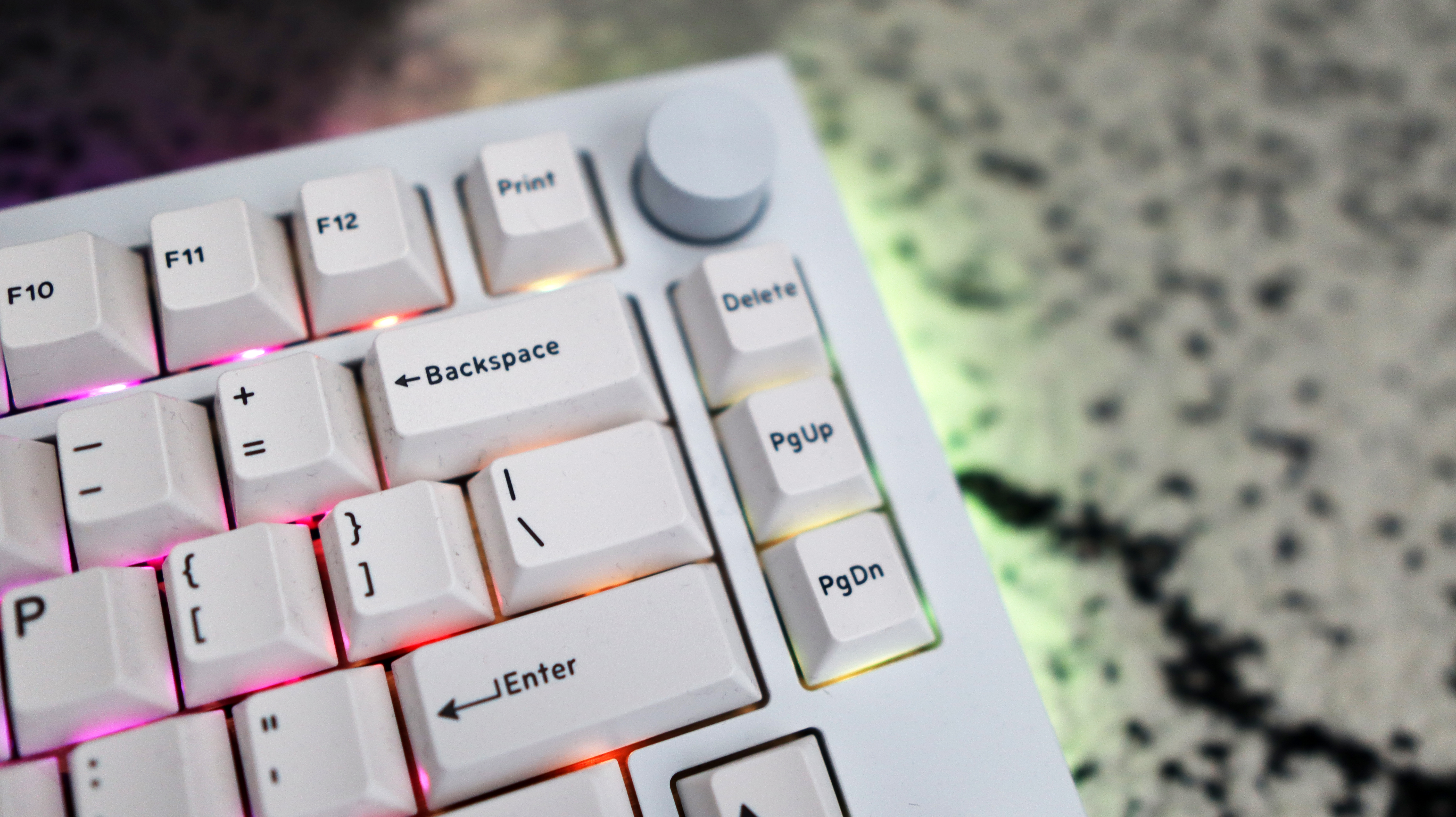
The 75% layout it uses is actually my personal favourite, and the Sense75 offers an intuitive layout, complete with the creature comforts of arrow keys and nav cluster buttons. You aren’t actually losing much compared to a more standard TKL keyboard, and the 75% layout also looks a lot nicer, too. Much like its competition, there is also a volume knob which provides some extra tactility and functionality to the Sense75.
These Holy Panda Xs are some of the best tactile switches I’ve ever used.
The real reason why the Sense75 is worth picking up from my perspective are its switches. While it is hot-swappable, and you could chuck in all manner of 3 or 5 pin MX style switches, the Holy Panda X switches used by default are just excellent.
For some background, these switches have their origin in a community mod that took the stem of a Halo Clear switch and put it in the housing of a Panda switch, creating the Holy Panda. Since then, they’ve been recreated and put into keyboards by everyone from Glorious to Drop, and the Holy Panda Xs I’ve got here are the latest in a long line of brothers. They’re a soft tactile switch that are comparable to Cherry MX Clears in terms of force with a heavier 60g weight and a crisp tactile bump. As someone who’s used to typing either Cherry MX Browns, Clears and, more recently, the silent goodness of an HHKB Professional Hybrid Type-S, I like to think I’ve got a decent hand on what a good soft tactile switch feels like. These Holy Panda Xs are some of the best tactile switches I’ve ever used and I don’t think I’ll be replacing them anytime soon.
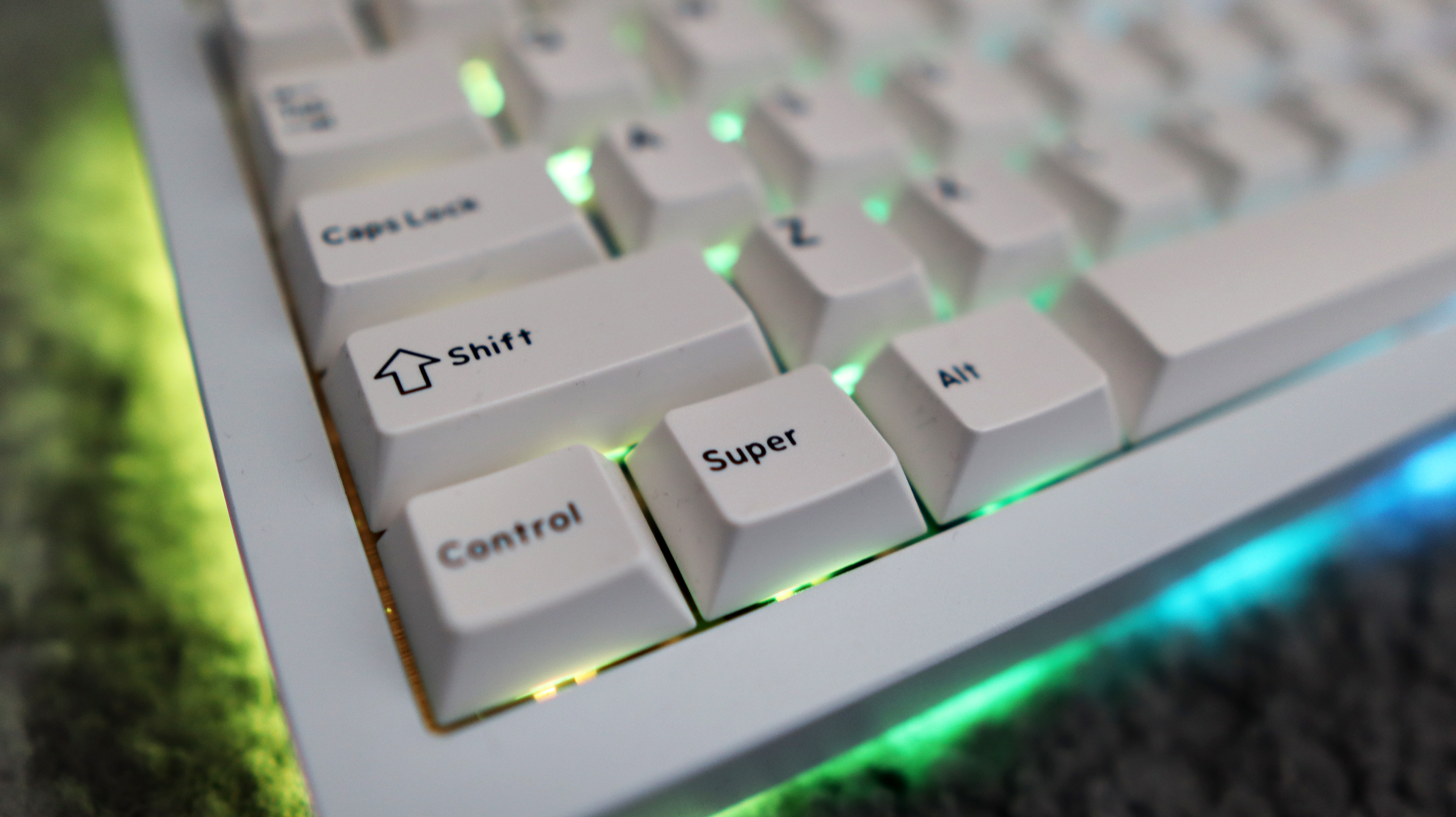
The fact they’re a heavier switch means they’re more designed for typing as opposed to gaming, and for this purpose, they’re some of the best switches money can buy. Of course, if you don’t like them, you can swap them out for all manner of MX-style switches, be it ones from Cherry or the shedload of clones that exist in 2023.
While these switches help to make the Sense75 one of the best feeling keyboards money can buy, I do have a small complaint. The enthusiast in me isn’t the biggest fan of how pingy the aluminium case is, although some more dampening and foam is likely to alleviate this. For a keyboard this expensive though, I may well have expected the case acoustics to be a little bit better. With this in mind though, Drop’s decision to go for south-facing LEDs is handy for those who want to swap switches out, and the gasket mounting here helps to offer a slightly springier typing feel, as is customary for other keyboards of this ilk.
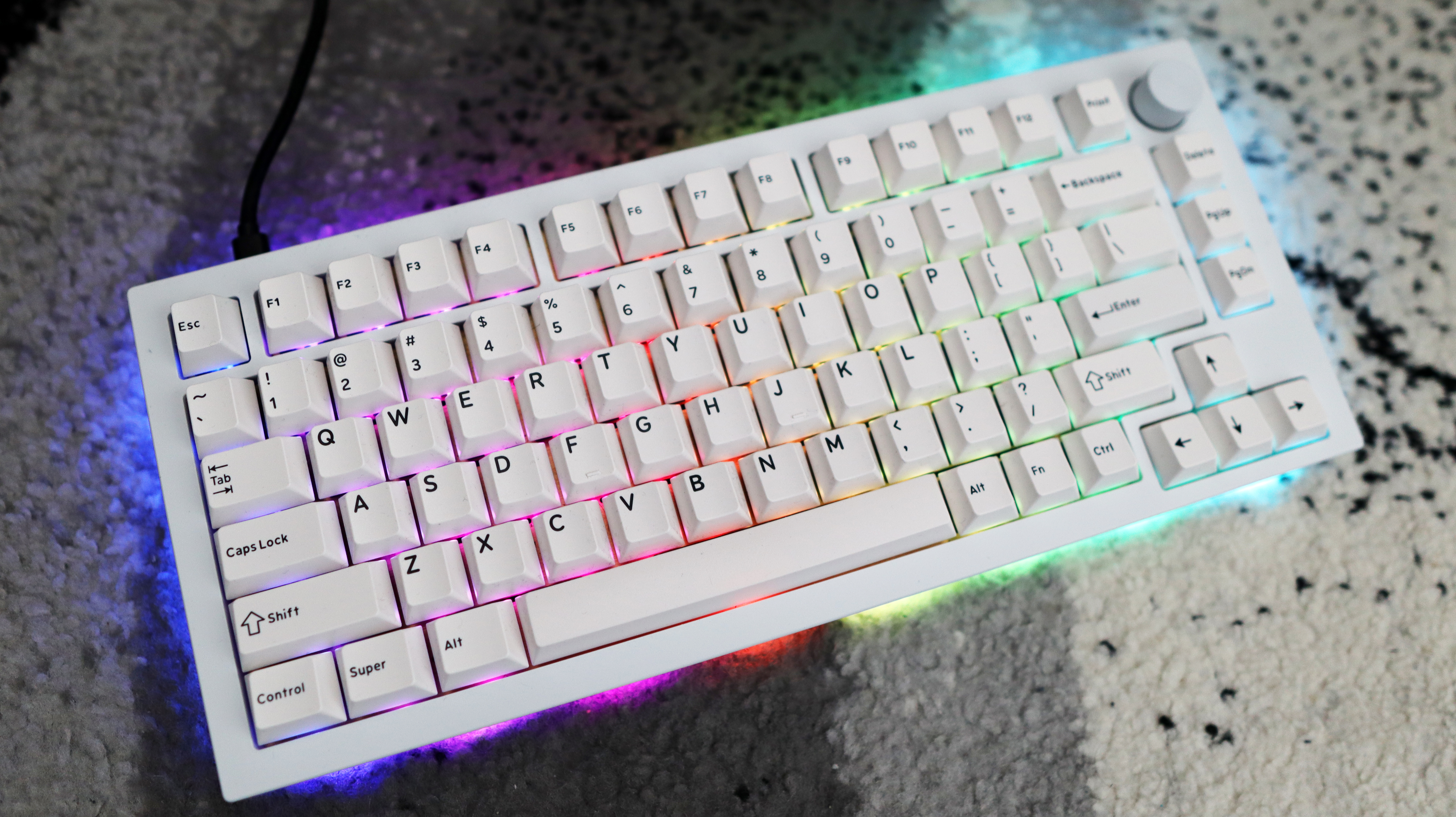
The especially intriguing thing about the Sense75 is its underglow RGB lighting. It contrasts other keyboards’ per-key lighting and opts for a vibrant take on lighting that looks to be there more as ambient lighting for your desk, as opposed to making it easier to see the Sense75’s keys in the dark, With that in mind though, it provides some handy illumination that offsets the white and blue chassis nicely. RGB lighting can sometimes cheapen the aesthetics of a keyboard, but that isn’t the case here.
While I’d normally be about to go and tell you to buy the Sense75 given I’ve waxed lyrical about it for a few paragraphs, that price tag is just stopping me from doing so. $399 is a wildly high price for a keyboard for most people, but when you’ve got just as capable options for a fair margin less, the Sense75 becomes a bit of a hard sell. Don’t get me wrong, it’s a gorgeous, class-leading keyboard that offers one of the best typing experiences money can buy, but that extreme price tag just lingers at the back of my head.







